This is Part XIV of The Public Medievalist’s continuing series on Race, Racism and the Middle Ages.
You can find the rest of our special series here.
If I asked you to imagine medieval France, you could likely close your eyes and summon a reasonably detailed image. You could probably do the same for Italy, Spain, or Jerusalem. After reading the other articles in our series, Sicily might not be such a problem, and places like Hungary, Kiev, or Tunisia might even be in your repertoire. And even though they are not typically thought of as “medieval” (as Dr. O’Doherty explained in her “Where were the Middle Ages?”), you might at least have a few details about further flung places like India, China, or Mongolia.
But what about Africa—specifically, sub-Saharan Africa?

Even as a medievalist, I will confess to drawing a blank. Having played the Civilization series of games, I was familiar with the names Mansa Musa and Mvemba a Nzinga, but knew little else about them, or the rest of the continent and its peoples. And in the absence of knowledge, we begin to fall back on stereotypes—imagining the continent much the same way as the European colonizers did: full of tribal people in thatched huts holding spears.
This is a problem, and a core one for our current exploration of Race, Racism, and the Middle Ages. Even though sub-Saharan Africa is not typically labeled “medieval,” people from sub-Saharan Africa—either travelers or by ancestry—were very much a part of the medieval world. And as we learned from our essays on maps, medieval people—especially Islamic traders—had travelled there.
Much of the lack of popular knowledge is a product of racist, imperialist attitudes towards Africa—even among professional historians. Take, for example, an infamous statement by Oxford historian Hugh Trevor-Roper. He stated that Africans have no history because they have no documentary history, and that prior to European colonization, African history was no more than “the unedifying gyrations of barbarous tribes in picturesque but irrelevant corners of the globe.”
Trevor-Roper opined this in the 1960s. Thankfully, he is continually being proven wrong by the burgeoning fields of African history, anthropology and archaeology. But, as we have explored continually in this series, popular perceptions of the past are often slow to catch up, especially when they are fighting against a racist headwind—one that, in this case, says that Africa is either unknowable, or not worth knowing. This attitude claims that it is, and was, a place without culture, sophistication, or the agency to decide its own fate. But that could not be further from the truth.
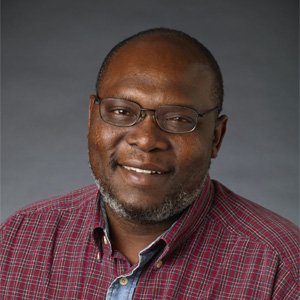
To begin to correct this, I was fortunate to be able to sit down with Professor Chapurukha Kusimba in his office at American University. Professor Kusimba is an Anthropologist and Archaeologist who specializes in the archaeology and cultures of East Africa. He has done landmark excavations in several sites on the Swahili coast and Madagascar, and the author of over a hundred books and articles, including the landmark The Rise and Fall of Swahili States.
Our conversation ranged widely across the continent, the misperceptions of Africa and Africans, and his life’s work. Below is the first part of our conversation—where Professor Kusimba reveals a medieval world very different from how we are accustomed to viewing it—when Asia, rather than Europe, was the world.
Methodological Racism
Professor Kusimba began by addressing how crucial it is that people study early Africa, as well as and the long-held prejudices that led to ignoring an entire continent:
Professor Kusimba: Without Africa there would be no humanity. Africa is the birthplace; we are all African in a sense. The notion of Africa as a place that lacks agency has been countered by many historians.
TPM: How did this idea that Africa has no agency come to be?
Kusimba: There are Judeo-Christian notions that explain away their agency. On the one hand, you have the “Hobbesian dilemma”: an idea that somehow promoted European exceptionalism vis a vis the ideas for justifying enslavement of African. The big question in our time is how could human beings do this to fellow human beings? I think the discussions of slavery and enslavement, ironically, has focused on only black versus white issues. In reality Europeans have a long history of enslaving each other!
TPM: If you look at the Roman Empire…
Kusimba: Greeks and later Romans sought slaves in central Europe; Persians too were equal opportunity enslavers. As were Ancient Africans of the Nile Valley. Today, some medieval scholars deny or only grudgingly accept the African identity of Egyptians. So, the justification of slavery—of Africans arising from their lack of agency and history—is often attributed to the work of German philosopher Georg Wilhelm Friedrich Hegel. He saw Africa as a place that really didn’t merit anything worth talking about.
TPM: And as we know, Hegel was massively racist.
Kusimba: I think, for the most part, it was many 18th and 19th century European thinkers. In Africa, often we go back to the late colonial period in the 1960s, to Oxford Regius Professor of History Hugh Trevor-Roper. In writing and thinking about history, historians relied, as many still do, on written documents. With the exception of a few, historians were slow in utilizing anthropological sources in the writing of history. Oral traditions had not yet been incorporated into “history.” So, he rightly, in his time, declared that the only history visible in Africa were European activities. It was a world in which documentary evidence was preciously scarce and historians did not understand those documents written in African languages, like Geez, Hausa, or Swahili.
So, when you think about that period—the 1850s—when Europeans begin to venture into Africa, first as explorers and later as colonizers, there was little documentation. Europeans writing about colonial Africa had to rely on oral texts and, sometimes used Arabic texts where they existed. But even these texts were equally biased. Like Europeans, Arabs had their own prejudices. For them the world was composed of the people of the book, who included Jews, Christians, and Muslims—and everyone else: Kafirs.
So, Arab writers, even the most liberal of the time, they viewed Africans through their own lens. For example, even an uncritical reading of One Thousand and One Nights, ʾalf layla wa-layla, reveals a very racist document. Because the devil incarnate is usually this black creature; writings about representations of Africa through the Arabian Nights series are equally as racist.
TPM: So the denigration of Africa was pretty universal.
Kusimba: In Swahili, we say “An empty hand, a dry hand cannot be licked” ‘Mkono mtupu haulambwi. That is to say, when one is, poorer one has a lesser network. You are powerless. Everybody will feel they are justified to step on you as they forge ahead.
When Asia was the World
Professor Kusimba and I discussed the way that Western Europe’s central role in the Middle Ages has more to do with later scholars than historical realities. A truly accurate view of the world during the Middle Ages should focus on Asia as the proverbial center of an increasingly globalizing world:
Kusimba: I think many historians and economic historians now characterize the period from the Tang dynasty in the 8th century to the end of the Ming Dynasty in the 16th as the period when Asia was the world. In many ways Asian empires, including the Islamic Caliphates, China, and India, were economically and politically powerful. At the time, the world revolved around them. Much of the progress we now attribute to the Silk Road—maritime and overland trade—arose there.
That is the time when major transformations in science and technology, in commerce, in standardization of currency, banking, finance, all of these institutions come to bear. And in many of these empires, including the Mughals of India and the Safavids of Persia, had a huge impact in the entire “old-world” political economy. Commerce between the Mediterranean world and Southern Europe, North Africa, East Africa, South Asia, and East Asia was regular—the entire region was completely intertwined. People moved back and forth and settled temporarily—but mostly permanently—wherever their fortunes took them.
One of the major attractions of this period is that these Muslim and Buddhist empires were extremely trader-friendly. And I think that because the Muslim caliphates spread across this entire region, from North Africa, including parts of West Africa, North East Africa, going all the way to Central Asia, this means that as any Muslim, Jewish, Christian, Hindu, or even Zoroastrian merchant could travel the length of the world without risking molestation. The rules of doing commerce had become, essentially, standardized. Merchants, whatever their religious affiliations, were welcome in all these lands without risk of being enslaved. And so this 800-year period is when we can rightly talk about a period of early globalization.
TPM: Early globalization.
Kusimba: Exactly, this was the coming together of economic and political elites. There was always a tension among them. But this period is characterized by a rare rapprochement. So archaeologically, when you look at the period between at least 750, up to 1500, or even up to the present, you will recover at these port regions that were part of the Silk Road network–from Guangzhou [Canton] all the way to Mombasa and Zanzibar—find the same artifacts.
TPM: Trading the same things everywhere?

https://afriques.revues.org/1836#tocto1n7.
Kusimba: The same trade goods; very similar. The same elite tastes, people consuming the same things. I can show you some of the trade ceramics that we find, or Chinese silks, which were the fashion of elite work everywhere. Indian cloth was bought and sold across the region. As for jewelry, South Asian trade beads were popular from hunter-gatherers of the Kalahari to the elite men and women of Cairo. Beginning in the 1800s and 1900s we find Venetian beads beginning to venture into these markets. Today, an excavation of a Dutch settlement site in South Africa, a Native American village in New France (Illinois), or colonial fortress in Wisconsin will yield the same Venetian beads. So it speaks to the globalization that has been going on since the eighth century but also speaks to a tide that was turning in Europe’s favor.
In terms of my work, I study the period between the rise of Islam, from the death of Prophet Mohammad, to the European advent, following the Portuguese successful circumnavigation around Africa and in search for direct sea route to India. And then of course, Columbus’ discovery of the New World.
And so on the one hand, during the Tang Dynasty a unified imperial China rose to become a superpower. China’s investment—both imperial as well as private—in major industrial complexes resulted in their monopoly of probably 80% of the world’s demand of porcelain and silk. At the same time, we also see major investments in institutions of learning, the rise of Universities. People went to China, Baghdad, Isfahan, Cairo, Toledo, and so on for further education, as they do today in America. They studied many disciplines, from medicine, to mathematics, geometry, calligraphy, commerce, poetry and so on.
TPM: And you see this much more in China than in Europe?
Kusimba: Much more in China. You see the rise of Universities in Baghdad, In Damascus, Aleppo, many of these places. You see the development of what I call “Think Tanks”, much like the Brookings Institute that we see today. These think tanks were incredible because they attracted and welcomed diverse scholars who were united by their love of knowledge. At these universities, you would find Christian, Muslim, Jewish, and Buddhist students and faculty. They were all there, meeting and discussing the major topics of their time and writing about them. All this was supported and financed by the state. Some of the best poetry, developments in geometry, discoveries in medicine, investment in ceramic production were invented at this time. The father of modern medicine, Ibn Sina, an Uzbekistani, is from this period. So were poets like Rumi. Leo Africanus and Ibn Khaldun’s writings, among other scholars of the time, have left us rich archives to excavate.
TPM: Do you see these advances in your work?
We are now doing these elemental analyses of the ceramics that we get. And we know that these guys are thinking about ways to improve their products. These advances were not accidental. They arose from the deep desire to know and willingness of the state and economic elite to invest in scientific exploration. You can imagine that there is a huge kiln, supported and financed by the state. But you can also visualize chemists who are carrying out experiments and ensuring that they finesse the processes of making pottery. You can see these developments being made.
TPM: These research institutes, where did they exist? What were the names of the most well-known, prodigious, famous ones?
Kusimba: If you look at Isfahan [ed., in modern day Iran], Aleppo, Baghdad, Basra, and of course Alexandria, Cairo. There are all these centers of learning, from Mumbai to Spain, and many of these places, that are developing. And, in West Africa, you have Timbuktu. And then you have Buddhist Confucian schools, some of those Universities develop as temples. So many of these scholars moved from temple to temple, from mosque to mosque to learn. There was a huge network of scholars along with the vast networks of merchants. But there is a real belief in literacy. For Muslims, Jews, and Buddhists scholars, literacy was really a thing. They loved knowledge. And although many of the scholars were armchair scholars, they collaborated with merchants. They would ask them to bring back seeds of different plants from different parts of the world so they could experiment with them.
TPM: That’s fascinating.
Kusimba: But why is this important? This is important because even as archaeologists digging about in these remote places that no one has ever hard off or cares to know, it is really important that we engage with the writings of these early scholars. Because without engaging with the writings of these early scholars, we soon run into the same inventions and biases that we criticized.
Next week, I continue the interview where he reveals the Africa he knows—not lost in the mists, but powerful, sophisticated, and intimately connected with the rest of the world. Continue to part II of the interview, here.
The Public Medievalist does not pay to promote these articles, so we would love it if you shared this with your history-loving friends! Click to share with your friends on Facebook, or on Twitter.
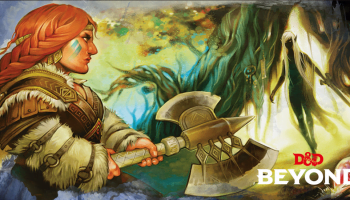
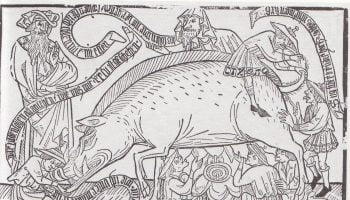

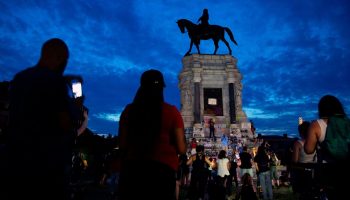
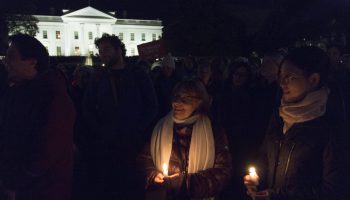
Comments are closed.